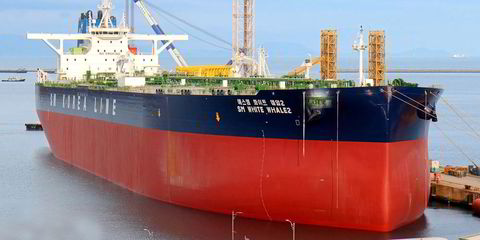London-based Concirrus and Tel Aviv-headquartered Windward are leading initiatives that are starting to result in dramatic changes to the way underwriters price insurance.
The two IT start-ups are selling systems that allow marine insurance premiums to be based more on real-time ship performance monitoring weighted against a historic analysis of risk and less on the traditional method of pure claim’s history.
The two companies have moved in on the marine insurance market because, compared to other insurance lines, it has largely been untouched by internet technology, says Windward chief executive Ami Daniel.
“There is a lot of experience in marine insurance but perhaps not as much technology as in other lines like property and casualty. Other markets are more sophisticated in how they model risk but marine insurance is like going back 20 years,” he says.
More detailed analysis
One reason for the change is that the emergence of automatic identification system (AIS) and other ship monitoring data has allowed for more detailed historic risk analysis.
Concirrus chief executive Andrew Yeoman says the marine market had been “underserved” by technology.
“We felt specifically in the way which insurance is rated and managed could be revisited," he says. "We saw an opportunity for data and technology because we always felt behaviour is a better indicator of risk than demographics.”
Both companies are keen to confirm they are already working closely with underwriters on using the products, although both are equally protective about the name of their clients.
Generally under these products, AIS data is combined with hundreds of other data sources to assess the probability of a casualty happening in a variety of trading patterns, speeds, weather conditions, seas and ports across the globe. This provides underwriters with a sophisticated analysis of risk and indicators of when casualties might occur.
That then can be compared with the actual performance of ships in real time, which, when combined with other factors such as claims history, can provide a more accurate pricing of risk.
As Yeoman points out, it is the quality of data that is critical to the success of the programme. Critics suggest raw AIS data, particularly early data, can be wildly inaccurate.
Hundreds of data sources
Algorithms have helped Concirrus fill in the data gaps and now it has hundreds of data sources on vessel performance.
Daniel says Windward is working with something like 1,500 parameters and using machine learning to find correlations that will rate a ship’s risk for the upcoming year.
The depth of analysis allows it to calculate the probability of a vessels' actions resulting in a claim in a wide variety of circumstances.

A key advantage of such an approach is that it not only allows for more informed underwriting but it also can mitigate the risk once it has been identified.
“We can show the customer the reasons risk is high and this can be translated into actions,” Daniel says. “There is a need in the insurance market to provide value beyond the policy and a lot of insurers and mutuals are starting to think how to translate this actionable data and provide something like a decision support centre.”
More accurate pricing
But where could all this be leading? The immediate result could simply be more accurate pricing linked to the more detailed risk assessment.
And that will encourage fixing price more in line with the actual risk than other influential factors such as an oversupply of capital in the market.
“A lot of available capital and a soft market has led to a situation where risk is priced correctly but below the technical pricing,” Yeoman says. “What we see is an alternative way which allows people to price better with a behavioural price and to actively manage that portfolio.”
Taken to its extreme, fully automated underwriting is a possible result end, although both companies stress they still believe there is a place for the expert underwriter.
Concirrus’ Yeoman points to a future where real-time marine risk is covered in a way which is akin to the so-called “In-Play” sports betting systems in which odds change according to the ebb and flow of the game.
He also likens the possibilities to the pay-how-you-drive behaviour based insurance — known as telematics — that is starting to gain traction in the motor industry.
Windward’s Daniel thinks what he describes as “pay as you go insurance” could be here as early as four years from now.






